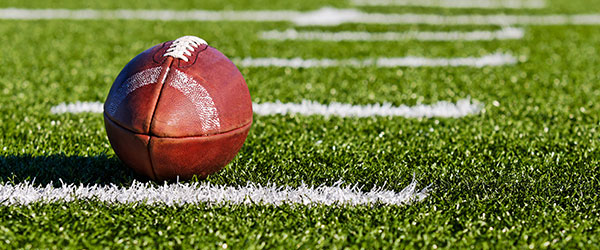3 Common Football Injuries and How to Prevent Them

Ready, Set, Hike!
Football is back! We are still early in the season, but we’re already seeing some of the league’s best players succumb to injury. New York Giants star receiver Sterling Shepard recently suffered a non-contact ACL tear, ending his season. Football is a contact-heavy sport, and injuries are common. Here are three common injuries that players from youth football up to the NFL need to be cautious of.
“As a sports medicine specialist at OAH, I see numerous knee ligament and labrum injuries. I have worked with athletes of all levels, from high school to Olympic athletes. It doesn’t matter the skill level. These injuries can happen to anyone. My job is to ensure that athletes get back in the game with confidence,” says Dr. Clifford Rios, Orthopedic Sports Medicine Specialist.
Common Injuries
1. Knee Ligament Injuries
Knee ligament injuries are one of the most common sports-related injuries. A tear occurs in the Anterior Cruciate Ligament (ACL) and Posterior Cruciate Ligament (PCL), at the center of the knee, or in the Medial Collateral Ligaments (MCL) and Lateral Collateral Ligament (LCL), at the exterior of the knee. Each of these ligaments plays a role in the stabilization and motion of our knee joints. An intense blow to the knee or rapid changes in running directions can affect these ligaments and cause a tear. Like Sterling Shepard’s injury, it’s common to see non-contact tears in knee ligaments.
Competitive athletes maintain excellent strength, flexibility, and balance to help protect their knees from injury. These injuries require an orthopedic specialist to diagnose and treat the affected ligament, and often require extensive rehabilitation.
2. Shin Splints
Shin splints are a common injury in sports that involve a lot of running. Microtears form when the muscles, tendons, and bone tissue become overworked, resulting in pain throughout the shin. Wearing improper footwear can also contribute to injury.
To prevent shin splints, most athletes stretch and strengthen their lower legs. Treatment is relatively simple and does not require an orthopedic specialist to diagnose this type of injury. Icing and resting your legs can help reduce the pain.
3. Labrum
The glenoid labrum stabilizes the humerus (arm bone) within the glenoid (shoulder socket). These injuries occur with shoulder dislocation, forceful pushing as linemen do, or repetitive throwing. They are most common in football players who come in contact with the ball; a repetitive throwing or catching overhead motion affects the area over time and can cause tears. Labrum injuries can create feelings of pain, weakness, or instability of the shoulder.
Players can do exercises and stretch to target the shoulder region to prevent this injury. You should consult a specialist if you continue experiencing pain after any injury.
Now that you know some of football’s most common injuries, we hope you’ve learned a bit about how to prevent and treat them. Our orthopedic specialists are here to provide you with the best care should you or someone you know experience any orthopedic injury.
The list of injuries goes on, and we’ll share more of the most common injuries that our OAH team has seen in various sports over the years. For more information on our sports medicine practice, please visit https://oahct.com/direct-orthopedic-care/sports-medicine-orthopedic-specialist/.